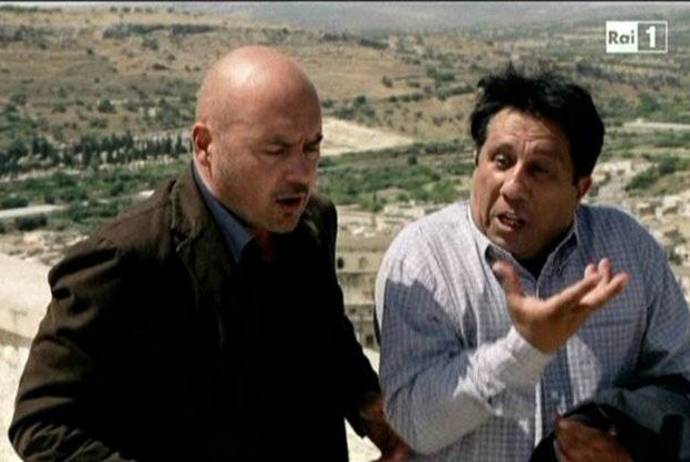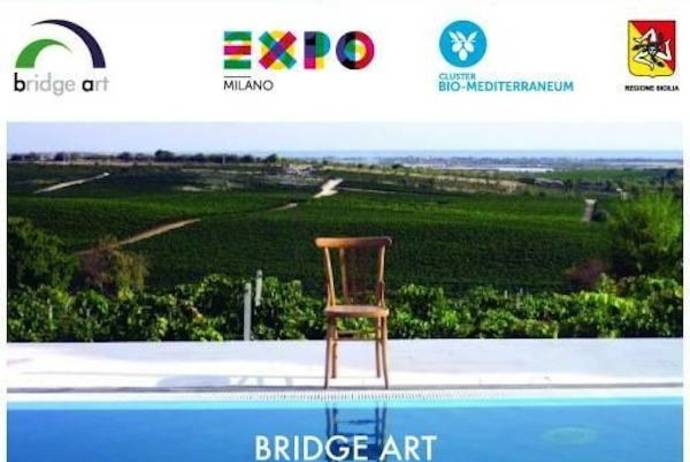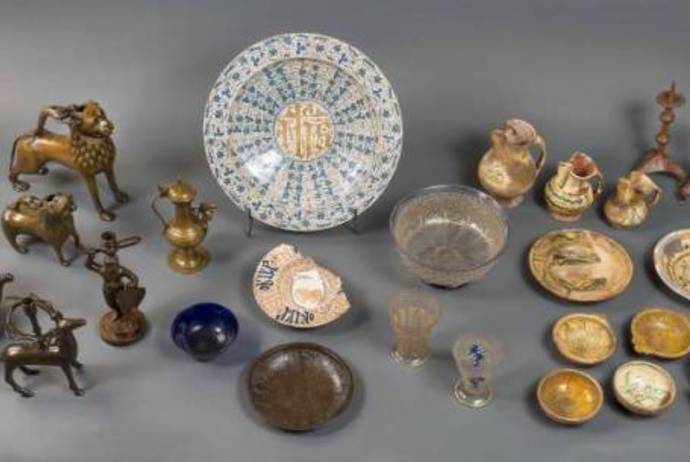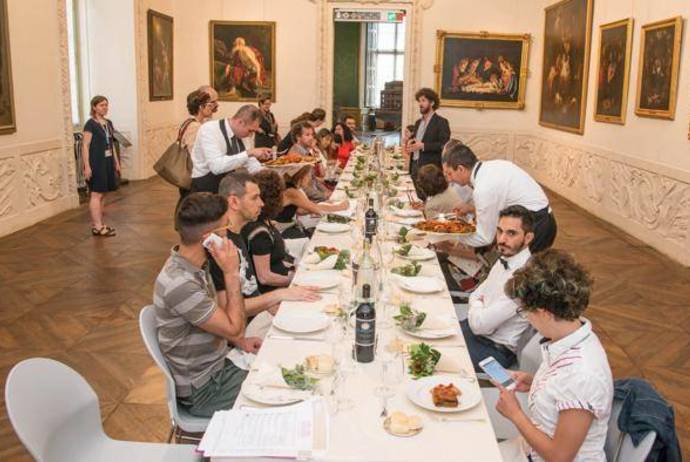You are here
Articles by: Alessio Shostak
-
-
 Events: Reports
Events: Reports
The new bookstore located at 1133 Broadway retains many of its signature features which characterized its beloved predecessor, such as its iron and brass chandeliers and cherry wood bookcases.
The new 5,000 square foot space is on the ground floor of the St James Building, whose architectural style designed in 1896 by Bruce Price mirrors that of the previous bookstore. The new store also boasts 18-foot ceilings, a skylight, and a red, pivoted door.
Lauro Donnini, a representative of Rcs Libri, the international publishing media company that championed Rizzoli’s revival, lamented the downfall of many of the City’s libraries and the shifting trend towards acquiring books digitally; “”Buying books on Amazon is easier. However, normally when someone goes on Amazon they already know what they want.
We [Rizzoli] want to be a place where people can come in and discover something new, something unknown.” Donnini praised the role of bookworms worldwide for making this revival possible and claimed that “After 51 years we want to continue to be a cultural centre, not only for New Yorkers and tourists but also for the entire intellectual community worldwide.” -
 Style: Articles
Style: ArticlesMr. Fiorucci was bled young in the retail sector, collaborating with his father in the latter’s boutique when he was a teenager. In 1967, however the ever adventurous Fiorucci branched out, launching his own store inspired by London’s Carnaby Street, and particularly by the impressively inventive designs in the iconic Biba store.
In the 1970s he would branch out, creating his own namesake label famous for its stretch jeans
for women and its long T-shirts featuring the twin cherubs.His brand quickly spread globally, culminating in the 1976 opening of the flagship Fiorucci store on East 59th Street. Needless to say, the store quickly transcended the world of fashion and became a symbol of the rapidly growing disco era of the time.
Fiorucci drew countless high-profile figures from the world of art and entertainment, for instance Madonna, Yves Saint-Laurent and Andy Warhol, who would visit the store daily. The store also became a platform for eccentric emerging artists and designers such as Anna Sui and Betsey Johnson.
The latter recalled that “in 1978 I came out with my first collection, and Fiorucci was the only store that wanted it. It was all the stuff from the movie ‘Rock ‘n’ Roll High School’, and I guess it was just too out there for the other stores.” Indeed, countless shoppers remember Fiorucci as a lifestyle choice; Kim Hastreiter, a founder of Paper magazine who frequently visited the store, stated that “it was culture, it was music, it was lifestyle, all in one, and everybody came: Greta Garbo, Andy Warhol and the king of Spain.”
Fiorucci was a restless innovator, and many of his ideas have been replicated by boutiques around the world. He was the first man to hire D.Js to spin tunes at his boutique, long before turntables became the norm. He was also the first to hire a group of fashion scouts, who would tour the globe in search of the latest trends from discos worldwide. Designer Marc Jacobs touched on this novel phenomenon;
“I had this wide-eyed glamour about these beautiful young people that globetrotted from club to club dressing in these fabulous clothes. It was like a living, breathing fashion show that I wanted so much to be a part of.” His inventory was also nothing to sniff at, styled in Day-Glo colours and eye-catching materials such as Lurex. Fiorucci was never one to rest on his laurels, constantly reshuffling his brand’s wardrobe to mark the latest trend to better encapsulate the Fiorucci lifestyle.
Elio Fiorucci; a radical, visionary genius whose talent would see his namesake transcend the world of fashion and enter the annals of history as a symbol of a liberating, empowering lifestyle adored and adopted by many. He will be sorely missed.
-
 Art & Culture
Art & CultureMedea, a Classical play written by Seneca the Younger (circa 4 BC – 65 AD), was on staged at the Colosseum from Monday, July 12 until Wednesday, July 15 at the 1,350 capacity theatre. It is the first Classical play performed at the Colosseum since 2000, when Sophocles’ Antigone, Oedipus Rex and Oedipus at Colonus were all performed at the Ampitheatre.
The play’s narrative consists of the bloodthirsty revenge of the enchantress Medea on her
unfaithful husband Jason, and its script contains many supernatural themes. Valentina Banci, under the tutelage of Paolo Magelli, plays the lead role as the enraged, unchained Medea, while Filippo Dini plays the adulterous husband.The set, consisting chiefly of symbols of the tragedy, has been designed by Ezio Toffolutti. Scored by Arturo Annecchino, The chorus, donning costumes dating back almost 100 years, convey Medea’s inner turmoil and gradual descent into madness during the course of the play.
Italy’s Culture Minister Dario Franceschini was the key figure behind the revival of Classical theatre at the Colosseum, having lobbied the National Roman Museum, the Rome Archaeological Area, the Special Superintendency for the Colosseum, and the RAI15 broadcaster to bring this play to the Rome’s famous landmark. He claimed that this play will allow the iconic landmark to recover its status as a key location for performance staging whilst allowing the public to bask in its splendour.
-
 Facts & Stories
Facts & StoriesThe Sicily Region has reaffirmed its influential status as the partner Region - tasked with organizing the Bio Mediterranean Cluster - of the Milan Expo by announcing several prominent events featuring Sicilian origins.
The events will be held both in the Piazzetta Square and the pavilion the region has built for Sicilian-centric events and will run through July 16.
The announced events vary wildly in their content. First off is a public debate between Angelo Russo, who plays Catarella in the internationally acclaimed mystery television series ‘Commissario Montalbano’, the show’s filmmaker Alberto Sironi and other participants.
A plethora of other activities have also been announced. One among these features Floridian actor Sebastiano Lomonaco, who will entertain crowds with re-enactments of Greek tragedies weaving in the Sicilian dialect into his performance.
The Canunovu, a band that aims to popularise Sicilian fold music via the implementation of Mediterranean rhythms and sounds, shall also be present at the Expo. ‘Infiorata’, a painting technique utilising flowers as opposed to conventional brushes, will also be in the spotlight.
The Sicilian Baroque parade will also perform at the Cardo, one of the main boulevards of the Expo. The performance will be a re-enactment of the Maestranza, a town militia created to defend the town of Caltanissetta in the event of an invasion by the Saracens.
-
 Facts & Stories
Facts & Stories
The projects on display at the Bio Mediterranean Cluster – just as many projects at the Expo 2015 seek to accomplish - critically discuss the key issues facing humanity.
‘Bridge Art #1 contemporary visions’ is a contemporary project which takes multiculturalism as its key theme, seeking to express the importance of cultural diversity in establishing and eroding identity constructs in integrated societies, in addition to depicting the role of multiculturalism in communal work.
The project was conceived and executed by Valeria Valenza, a Germanist and novelist, and Lora Adragna across two separate locations – the farm La Favola di Noto in Sicily’s Val di Noto and the United States. The project was promoted by Tenuta La Favola, an organization with connections in the Noto Valley, a bastion of biodiversity and a UNESCO World Heritage Site.
The project was included in the events of the Cluster in addition to Greece, Lebanon, Egypt, Libya, Tunisia, San Marino, Serbia, Algeria, Albania and Montenegro. Spearheaded by ‘The Region of Sicily’, the project’s official partner, ‘Bridge Art’ aimed to increase Sicily’s international recognition due to its status as a crossroads between north, south, east and west. The project also sought to bridge the gap between the cultures of the aforementioned nations whilst also encouraging children to embrace diversity – indeed, ‘Bridge Art’ has already been presented to the United Nations International School.
-
 Facts & Stories
Facts & StoriesFrom the poor districts of Liverpool to international superstardom in an instant.
Mr Starkey is blowing out 75 candles this Tuesday 7th July. As the least attractive and ingenious, yet possibly the most likeable Beatles, the mischievous Ringo Starr has had an extraordinarily innovative and influential role among several generations of ‘drummers’.
A life that began in one of the most derelict districts of Liverpool but that rapidly shifted to that of a superstar whose star shines brightly even today. Just like the star that had been dedicated to him on the Hollywood Walk of Fame five years ago. Merely a few months ago Ringo published ‘Postcards from Paradise’, an autobiography which details his solo career that began in 1970 with the most important tracks of his career.
From his initial days as a poor youth, Ringo had been in sickly health, eventually opting to leave school and enter a sanatorium. Ringo’s break came in 1962, when after experimenting with many small bands in Liverpool (he had donned his stage name Ringo due to the many rings he wore) he permanently replaced Pete Best as the Beatles’ lead drummer, a band that had been formed two years prior.
With the Fab Four he would then go on to develop his relatively unsophisticated yet new, pounding style which would perfectly fit the new style of music that the Beatles would invent, a style which would change the very nature of popular music. He also cemented himself as an influential singer in songs such as “with a little help from my friends”, “yellow submarine”, “act naturally”, and most notably their hit song “Don’t pass me by”.
John and Paul claimed that they composed songs that would be sung by Ringo based on ‘ringoisms’, quirks that Ringo would display when singing that John and Paul dubbed ‘poetic’. Speaking of ‘Act Naturally’ (which in this case means acting, as well as behaving, naturally), Ringo would also go on to display notable acting talent after the band’s dissolution in 1970 in several films. Starr would not be downtrodden, and after his band’s dissolution he released two solo albums in 1970, which would pave the way for a solid yet unremarkable career as a soloist, culminating notably in some success in the US charts with singles such as ‘Photograph’ (written with George Harrison) and ‘You’re sixteen’. Indeed, he continued playing with John, Paul and George in many solo albums.
Despite being a worldwide celebrity in every capacity (participating in charity concerts, talk shows and indeed in an episode of the Simpsons), Ringo’s career as a solo artist never managed to cash in commercially, and he instead became a producer for several bands and artists. He was the only Beatle to only be inducted into the Hall of Fame as a Beatle, and not as a solo artist. In 1988 Ringo wound up in hospital for alcohol poisoning, and in 1989, after overcoming this difficult problem, he would go on to form the ‘All Starr Band’, which still operates to this day.
The band made its debut in 1989 in Texas: the drummer was the band’s sole anchor, with many rotating celebrities occupying the other roles. There has recently been some negative spotlight on Ringo; on 10th October 2008 he announced on his web site that he would no longer be responding to fan letters due to his “busy” schedule and, during the same year, he offended his fellow Liverpudlian citizens by claiming that he never missed the city while he was away, and that he had lied about it at several events (for instance, when he inaugurated Liverpool as the European capital of culture) in order to appease the hosts.
-
 Dining in & out: Articles & Reviews
Dining in & out: Articles & Reviews‘Time Table – Tavola dei Secoli’ is an exhibition taking place at the Palazzo Madama in Turin, which will run from the 24th of June until the 18th of October. Inspired by the 2015 Milan Expo, whose main theme is ‘feeding the planet’, ‘Time Table’ takes food as its central theme. From the Renaissance till the end of the twentieth century, the exhibition illustrates the allegorical importance of the tavola imbandita – loosely translated as the ‘lavishly decked table’- throughout history.
The dining room has forever represented a prime opportunity for family and friends to socialize, bond and share tales from the day’s events. The exhibition attempts to capture the importance of dining in making monumental decisions of great importance, as well as in love lost and love found throughout history.
The Palazzo Madama has been decorated with 6 tables placed circularly around a central fulcrum shaped like the hands of a clock, with each hand symbolizing different historical periods. Each table contains objects crafted by artists and artisans designed to echo the themes of both conviviality and weighty importance throughout time.
Plates, bowls, flasks and bottles from several historical periods all form part of the ‘Time Table’ exhibition; the relatively modest bowls of the 1400s, the Renaissance-era majolicas decorated with allegories, and the colourful, decorative Bourgeoisie designs of the 1900s all serve to echo the aforementioned themes reinforcing the importance of the tavola imbandita.
Tables with other classic symbols of the household, including board games, musical instruments, furniture and even a newly-renovated Emperor’s gown have also been included in the exhibition in order to capture the ambiance of dining rooms throughout history.
Other galleries have also been dedicated to items such as bowls and sacred vases traditionally used during the Lord’s Supper and other church services. Although most of the 180 items on display form part of the museum’s permanent collection, some items, such as a rare 17th century mandolin and an ivory & ebony cabinet, had never been publically displayed prior to the exhibition’s opening.
Overall, ‘Time Table- A Tavola dei Secoli’ is a novel exhibit which aims to illustrate the dynamic nature of dining in the household throughout history by focusing on the evolution of many of its key components – particularly that of the table – from the Medieval period till the late 20th century.
-
 Facts & Stories
Facts & Stories‘Time Table – Tavola dei Secoli’ is an exhibition taking place at the Palazzo Madama in Turin, which will run from the 24th of June until the 18th of October. Inspired by the 2015 Milan Expo, whose main theme is ‘feeding the planet’, ‘Time Table’ takes food as its central theme. From the Renaissance till the end of the twentieth century, the exhibition illustrates the allegorical importance of the tavola imbandita – loosely translated as the ‘lavishly decked table’- throughout history.
The dining room has forever represented a prime opportunity for family and friends to socialize, bond and share tales from the day’s events. The exhibition attempts to capture the importance of dining in making monumental decisions of great importance, as well as in love lost and love found throughout history.
The Palazzo Madama has been decorated with 6 tables placed circularly around a central fulcrum shaped like the hands of a clock, with each hand symbolizing different historical periods. Each table contains objects crafted by artists and artisans designed to echo the themes of both conviviality and weighty importance throughout time. Plates, bowls, flasks and bottles from several historical periods all form part of the ‘Time Table’ exhibition; the relatively modest bowls of the 1400s, the Renaissance-era majolicas decorated with allegories, and the colourful, decorative Bourgeoisie designs of the 1900s all serve to echo the aforementioned themes reinforcing the importance of the tavola imbandita.
Tables with other classic symbols of the household, including board games, musical instruments, furniture and even a newly-renovated Emperor’s gown have also been included in the exhibition in order to capture the ambiance of dining rooms throughout history. Other galleries have also been dedicated to items such as bowls and sacred vases traditionally used during the Lord’s Supper and other church services. Although most of the 180 items on display form part of the museum’s permanent collection, some items, such as a rare 17th century mandolin and an ivory & ebony cabinet, had never been publically displayed prior to the exhibition’s opening.
Overall, ‘Time Table- A Tavola dei Secoli’ is a novel exhibit which aims to illustrate the dynamic nature of dining in the household throughout history by focusing on the evolution of many of its key components – particularly that of the table – from the Medieval period till the late 20th century.






































